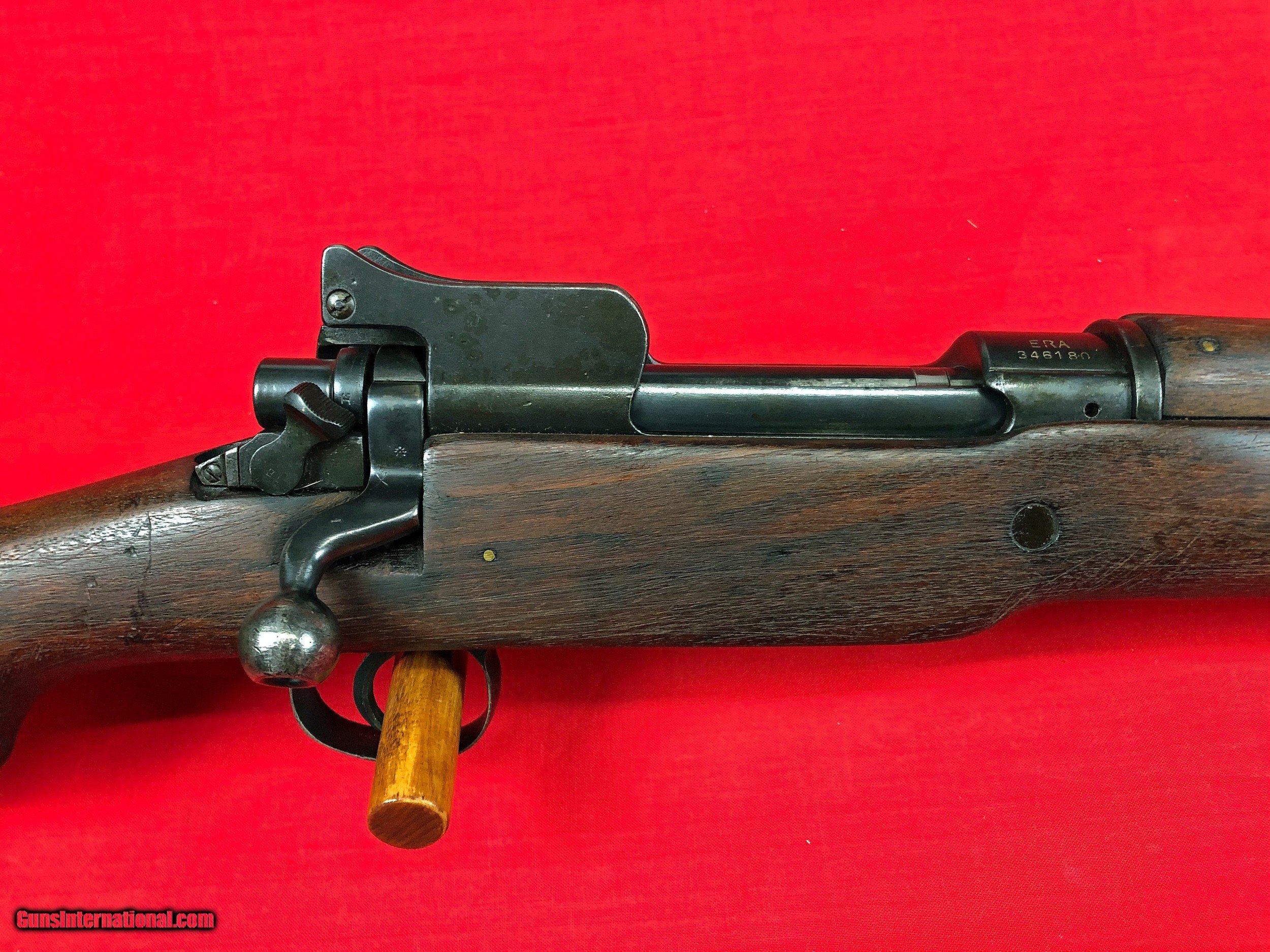

All production of the P14 was ceased, and Winchester, Remington, and Eddystone began manufacturing the new U.S. The Pattern 14 rifle, then in production for the British Army, was found to be easily converted to the US. However, only 840,000 had been produced, and the United States desperately needed an alternative to arm the American Expeditionary Force. When the United States entered World War I in 1917, the M1903 Springfield was the standard-issue battle rifle of the US Army and US Marine Corps. It was, however, popular with snipers, where its barrel length, long sight radius, and weight made it more accurate than the SMLE.

The rifle's length and weight made it unpopular with regular troops, who found it difficult to wield in the close-range combat of trench fighting. From 1915-1917 1,235,298 rifles were produced by Winchester, Remington, and Remington's subsidiary Baldwin Locomotive Works in Eddystone, Pennsylvania. The British government then contracted out production of the Pattern 14 to Winchester Repeating Arms and Remington Arms in the United States. However, it was decided that the rifle could be re-chambered in. Production of the rifle in Britain was also impossible, as all available facilities were cranking out SMLE MkIII's. When World War I began, it was determined that it would be impractical to convert the British Army to a new rifle and cartridge, and development of the. The rifle was not popular with troops, who reported excessive muzzle blast, overheating, and rifling wear. 276 Enfield, which propelled a 165gr bullet at 2,800fps. It was chambered in a new 7mm cartridge specifically developed for the rifle, the. The rifle had a 26" barrel, with a protected front sight, and aperture rear sight with flip-up elevation ladder mounted on the receiver bridge, which gave the rifle an extremely long sight radius. A 2-position thumb safety was located on the right side behind the bolt handle. The bolt handle had a distinctive "dogleg" shape, bringing it down and back toward the operator's hand. The new rifle featured a Mauser-type cock-on-closing action with front locking lugs, non-rotating claw extractor, and a staggered 5-round box magazine contained within the one-piece stock. 276-inch, colloquially known as the Pattern 13.

In 1911 the Royal Small Arms Factory produced a modified cock-on-closing Mauser-type design, which was adopted for testing in 1913 as: Rifle, Magazine, Enfield.
#Pattern 14 enfield era date upgrade#
Attempts to upgrade the Lee-Enfield design proved unsuccessful due to its rear-mounted locking lugs, and in 1910 the Small Arms Committee issued a requirement for a Mauser-type rifle with front-locking lugs, single-piece stock, and small-caliber cartridge. 303 MKIII cartridge, giving the Boers a decisive advantage in the open veldt of South Africa. The high velocity and flat trajectory of the 7x57mm Mauser cartridge proved much more accurate and powerful at long range than the British. 303 was severely outclassed by the M1895 Mauser rifles used by the Boer forces. Later (post war) when the nomenclature had changed and the Pattern 14 became the rifle No3, there was also the No3MkI*(T)A fitted with a low mounted Aldis scope (hence the A) this required the rear sight protector ears to be milled off.During the Second Boer War (1899-1902), the British Army found that the SMLE rifle chambered in. These rifles are burdened with the ungainly: Pattern 1914 MkI*W(F) and Pattern 1914 MkI*W(T) designation Winchester made significantly fewer than either Eddystone or Remington. In British service, for marksman/sniper variants with fine adjustment rear sights (F) and later telescopic (T) optical sights, only WINCHESTER rifles were used which the British inspectors appear to have decided were superior. I also don't think this judgement was shared by UK inspectors. Eddystone certainly produced significantly more M1917s than the other two makers. This is interesting I was not aware of this. Amusingly, the reputation for the best rifles were those from Eddystone, set up in an old Locomotive plant just for the war, so much so that their rifles were preferred for overseas service over the other two (much more established) makers!


 0 kommentar(er)
0 kommentar(er)
